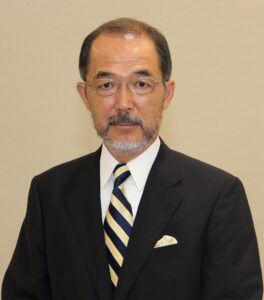Home Energy in the Age of Coexistence with Coronavirus – A View from Japan
Mr Mayumi Uezono, CEO of WLPGA member Koagas Nihon in Japan, has published a thoughtful essay on the co-existence of home energy in Japan in these times of COVID-19.
With his permission, we publish this translation from the original Japanese.

“Life with flame re-recognised in the digital age”
Mr. Mayumi Uezono
CEO, Koagas Nihon Co, Japan
The coronavirus pandemic is having a significant impact on social systems as well as the economy around the world. The future demand and supply of energy is relatively uncertain. New ways of thinking and living are required at a time when we have to live under fear of new coronavirus infections. It has been several years since the sale of all kinds of energy types were liberalised in Japan, I am honoured to have an opportunity to describe my thoughts on the issue of home energy during the COVID-19 pandemic, while reviewing the outcomes of the liberalisation and anticipating a potential policy shift following the U.S. presidential election in November.
The realty or nature of new coronavirus has not really been made fully clear. It is said that only the way to protect from the infection is to avoid the contact with other people, until a vaccine is available. It is uncertain when we will recuperate from our sluggish economy due to various economy improvement policies. However, I have no doubt that working from home, and staying in a local area will continue to increase from now on as we want to avoid infection. Clearly gas, electricity, and water infrastructure is an essential lifeline for our citizens who are forced to stay home, despite missing connection with fellow citizens in this Reiwa era (Note: Reiwa is the current era of Japan’s official calendar).
Aesthetics of The Flame
After the new coronavirus pandemic, people have been obliged to stay home for much more time, this can cause various stresses and other issues at home. But the flame has a healing effect. Humans are the only animals that handle fire. The fire marks the centre of the home, the place of conversation. It has been recognised that the fire has both relaxing and communicating effects. It has been known since ancient times that fire creates an atmosphere where emotions intersect. An example is Yukio Mishima’s novel “Shiosai “or “The sound of waves” which was made into a movie, and Chogoro Kaionnji’s tanka or Japanese poetry, “The fire-breathing mountain” echoes the same sentiment. Art and music with the theme of fire or flame represented by Prometheus, are not uncommon. It is said that the brain is activated by the act of giving fire, which is an important act for humans, and it can be said that the habitual use of fire is a natural recurring desire of humans at home in the Corona era. In short, the progress of science has led to digitalisation, but conversely, it can be said that one of the symbols of the mission of modern people to inherit the real things from ancient people, is flame.
City gas, however, which generates flame, has not been effectively used by home bound consumers.
One of the biggest problems is an immature market liberalisation. Today’s situation of the opening of the city gas market is the same as the “Market competition promotion theory”, which I previously posted in a local newspaper. Opening markets in major regional cities such as Kagoshima and Sapporo this year is a natural consequence given deregulation trends that began with “1993 Hiraiwa Report”, abolition of antitrust law’s exemption provisions and the request of the times for liberalisation of city gas. In view of both government policies for the further-liberating the Japanese economy and realising a free and fair economic society based on self-responsibility as well as the market principle, this is an inevitable result.
The historical turning point of the rigid city gas system is the opening of the market this time. The challenge for the future is how to raise the new entry rate into the only partially opened local gas market, guided by the interpretation of the Antitrust law, and both macro and micro economic analysis.
Three-layer cake structure theory
The US Clean Power Plan (CPP) is based on the regulation of greenhouse gas (GHG) emissions from coal -fired power generation. Although CPP was abandoned by the Trump administration, US environmental policy will move into line with world trends eventually, no matter who wins the upcoming election in November. The recent federal court ruling is also a sign that it reflects the will of the people. Also, the reason why the Japanese government is revising coal-fired power generation is that is no longer able to silence the international emphasis or voice on the environment.
However, it goes without saying that electricity is the base energy. If you compare it to a cake, electricity is the foundation. Renewable energy is getting a lot of attention, but its widespread use has yet to materialise because of its technology and economics. In other words, it is a topping. LPG and city gas support the topping as a sponge on the base, and will play a major role with its exceptional environmental characteristics.
The best mix of energy is absolutely necessary, but without doubt fire remains at the centre of the family in the era of the coexistence with the coronavirus.
Profile
Mr Uezono was born in Satsumasendai city in Japan in 1955. After he graduated from the University of Tokyo in 1979, he engaged in domestic and overseas legal affairs, contract negotiations, litigation, intellectual property right, etc. at a mining and energy large company。After joining the current company as managing director in 1984, he has expanded the businesses of LPG, city gas and electricity, etc. under the strict regulations, and at the same time has played an active part for the global development of the LPG industry through presentations at conferences in Japan, the US and Europe, collaborative activities with overseas institutions, articles in industry magazines and introducing translations of industry news. He is a member of the National Propane Gas Association (NPGA) and the World LPG Association (WLPGA). Mr Euzono lives in Kagoshima city in Japan.
